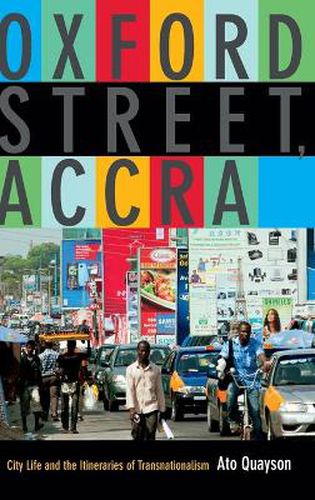Readings Newsletter
Become a Readings Member to make your shopping experience even easier.
Sign in or sign up for free!
You’re not far away from qualifying for FREE standard shipping within Australia
You’ve qualified for FREE standard shipping within Australia
The cart is loading…






In Oxford Street, Accra, Ato Quayson analyzes the dynamics of Ghana’s capital city through a focus on Oxford Street, part of Accra’s most vibrant and globalized commercial district. He traces the city’s evolution from its settlement in the mid-seventeenth century to the present day. He combines his impressions of the sights, sounds, interactions, and distribution of space with broader dynamics, including the histories of colonial and postcolonial town planning and the marks of transnationalism evident in Accra’s salsa scene, gym culture, and commercial billboards. Quayson finds that the various planning systems that have shaped the city-and had their stratifying effects intensified by the IMF-mandated structural adjustment programs of the late 1980s-prepared the way for the early-1990s transformation of a largely residential neighborhood into a kinetic shopping district. With an intense commercialism overlying, or coexisting with, stark economic inequalities, Oxford Street is a microcosm of historical and urban processes that have made Accra the variegated and contradictory metropolis that it is today.
$9.00 standard shipping within Australia
FREE standard shipping within Australia for orders over $100.00
Express & International shipping calculated at checkout
In Oxford Street, Accra, Ato Quayson analyzes the dynamics of Ghana’s capital city through a focus on Oxford Street, part of Accra’s most vibrant and globalized commercial district. He traces the city’s evolution from its settlement in the mid-seventeenth century to the present day. He combines his impressions of the sights, sounds, interactions, and distribution of space with broader dynamics, including the histories of colonial and postcolonial town planning and the marks of transnationalism evident in Accra’s salsa scene, gym culture, and commercial billboards. Quayson finds that the various planning systems that have shaped the city-and had their stratifying effects intensified by the IMF-mandated structural adjustment programs of the late 1980s-prepared the way for the early-1990s transformation of a largely residential neighborhood into a kinetic shopping district. With an intense commercialism overlying, or coexisting with, stark economic inequalities, Oxford Street is a microcosm of historical and urban processes that have made Accra the variegated and contradictory metropolis that it is today.